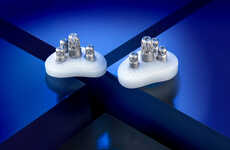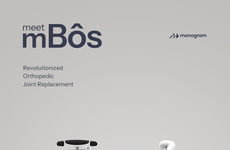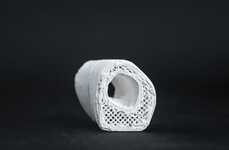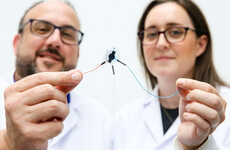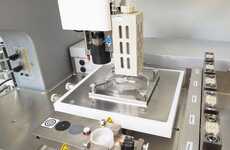
Superior Orthopedic Implants
DANIEL MENDOZA — September 30, 2007 — Eco
References: science.nasa.gov
Most orthopedic implants, like hip and knee joint replacements, last from ten to 15 years, which means that many patients require several replacement surgeries in their lifetimes. Scientists at Brown University hope to change that; they have started working on superior implants that may be easier to monitor and will integrate better with surrounding body cells.
The surface of an orthopedic implant is specially treated to sprout carbon nano. Researchers have found that this titanium grows bone cells faster and stronger than regular titanium does, so they're working to engineer orthopedic implants that can detect bone growth.
There is no doubt that technology gets better every day, making life easier for millions of people; but what about the hight cost of living? Can't nano tech come with a nano price?
The surface of an orthopedic implant is specially treated to sprout carbon nano. Researchers have found that this titanium grows bone cells faster and stronger than regular titanium does, so they're working to engineer orthopedic implants that can detect bone growth.
There is no doubt that technology gets better every day, making life easier for millions of people; but what about the hight cost of living? Can't nano tech come with a nano price?
Trend Themes
1. Carbon Nano Integration - Developing orthopedic implants that integrate carbon nano on their surfaces presents disruptive innovation opportunities in the field of orthopedics.
2. Bone Growth Monitoring - Creating orthopedic implants with the capability to detect and monitor bone growth opens up opportunities for disruptive innovations in the medical device industry.
3. Enhanced Titanium Implants - Advancements in engineering orthopedic implants using titanium treated with carbon nano can lead to disruptive innovation in the field of orthopedics.
Industry Implications
1. Orthopedics - The field of orthopedics can benefit from disruptive innovations by incorporating carbon nano, bone growth monitoring, and enhanced titanium implants.
2. Medical Device - The medical device industry presents disruptive innovation opportunities through the development of orthopedic implants with advanced features like carbon nano integration and bone growth monitoring.
3. Technology - The technology industry can explore disruptive innovations by leveraging advancements in carbon nano integration and titanium implant engineering for orthopedic applications.
4.4
Score
Popularity
Activity
Freshness

